МакЛарън MCL32 (представяне)
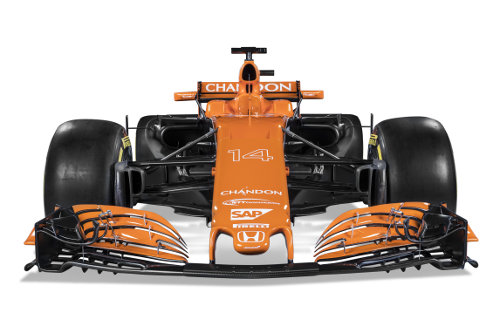
МакЛарън представиха новият си болид - MCL32. Освен новото име, той се е сдобил и с ново оцветяване.
(авторски права на снимките - МакЛарън)
(снимки от twitter)









Новият болида на МакЛарън е ... оранжев. Е, може би не това очакваха някои фенове, въпреки че според Зак Бараун оцветяването им идва в следствие на желанието на феновете. Не знам за вас, но според мен ако се разменят черното и бялото, то болида би изглеждал по-добре. Но, това си е лично мое мнение. По вкус и по цвят, приятели няма са казали хората.
Да се върнем на болида обаче. Гледайки представянето на живо, а и от снимките човек остава с усещането, че МакЛарън ни представят работата си от преди няколко месеца. Виждаме интересни решения тук и там, но като цяло не чак толкова завършени. Това беше потвърдено и от един от аердинамиците на отбора в twitter.
Носът на болида е вече с познатия ни израстък и тук изненади няма. Предното крило е с доста детайли, но общо взето, както и при другите отбори ще претърпи множество промени, както по време на тестовете, така и през сезона. Пилоните на които се държи обаче са доста интересни. Ако при Рено видяхме оформени дълги пилони, то МакЛарън които започнаха тази тенденция стигат доста по-далеч. Сега виждаме, че са разделени на четири части, всяка от които оформя отделно завихряне и отделен поток към последващите елементи.
Изглежда, че МакЛарън са сменили концепцията на S-duct-а си и са преминали към решението на Мерцедес. Може да се види отворът под носа наподобяващ уста на акула. Под носа се виждат и оформените плоскости които наподобяват пилешки крилца.
Кутиите за охлаждане на спирачките са с много интересна постройка. Виждаме два отвора. Ако кутиите на Ферари изглеждаха големи, то тези на МакЛарън в никакъв случай не са по-малки. Оформянето им обаче е доста по-интересно.
Гледан отпред болида на МакЛарън много прилича по постройка на познатите ни вече Ред Бул-и. В това няма нищо чудно разбира се с оглед на това, че Питър Продрому има голяма заслуга за аеродинамиката на МакЛарън тази година. Може и да е грешно впечатление, но отворите за радиаторите на МакЛарън не изглеждат толкова големи. Съпоставете ги спрямо пода на другите болиди ... Забележете и колко повече празно място има на МакЛарън. Докато другите отбори са построи цели замъци зад предните гуми, то при МакЛарън всичко е доста да кажем ... изчистено. Напълно е възможно да не виждаме всичко, което ще бъде на болида.
МакЛарън по подобие на Мерцедес разполагат с елемент закрепен на кокпита. Докато при Мерцедес той наподобяваше бумеранг, то при МакЛарън той е по-къс и преминава в дефлектор. При поглед отгоре можете да видите, че конструкцията не е никак проста. Самият дефлектор има само един вертикален прорез, като липсват извивките, които можеха да се видят при Ферари. Изобщо виждаме доста различни подходи тази година към тази зона. Липсата на елементи при МакЛарън обаче ни дава възможност да видим формата на пода и как са закрепени вертикалните плоскости около кутиите за радиаторите. Отново виждаме доста начално решение. Просто плоскост изнесена напред по подобие на Рено, но не стигаща до пода. Липсват всякакви отвори и разрези. Върху кутията за радиаторите има малко крилце и вертикален елемент до него.
Няма никакви допълнителни елементи около огледалата, каквито видяхме при Ферари и Мерцедес. Формата на самите огледала обаче е доста интересна и тук отново има аеродинамика.
Въздухозаборникът над главата на пилота е малък. Поне в сравнение с всичко видяно до момента и наложено като тенденция.
На пода има много място. Липсват каквито и да е прорези. Най-вероятно това просто няма да е пода на МакЛарън.
Самата каросерия изглежда по-раздута от тази на Мерцедес или Ферари. От друга страна не знаем кой как е подходил и каква е базата на болидите. Не знаем и с какво разполагат Хонда и какво охлаждане ще им е нужно. Възможно е да видим вариации в задната част на каросерията. Отборите обикновено варират според условията.
Присъства разбира се и перката на акула, а на по-късен етап вероятно ще видим и малкото крилце върху нея. Тези елементи е възможно да се появяват и изчезват от болидите според пистата и условията.
На задното крило също виждаме интересни детайли, които до момента никой не е показвал. Вместо да имаме просто изкривени плоскости, то МакЛарън са направили "ресни", каквито виждаме обикновено в долната част на плоскостите.
В началото написах, че оставам с впечатлението, че това е болид от преди няколко месеца. Виждаме доста интересни детайли и доста идеи в зародиш, което ме навежда именно на тази мисъл. Сега ни остава да видим какво са свършили Хонда и как са се справили МакЛарън с новото си шаси MCL32.
Фернандо Алонсо:
I think there’s a lot to admire about what we’ve achieved over the past 12 months. Sure, the results haven’t really showcased it, but we’ve really made progress, and I think the whole team has gelled together through those difficult times. Now, at a moment of significant regulatory change, we need to capitalise on that period of uncertainty to push forwards – and I’m confident that we’ve got the expertise to do just that.
What I’ve seen of the MCL32 appears to be really promising – the new regulations seem to be well thought-out, and the cars look fast and aggressive. The look of the car makes me really want to get in the cockpit – I’ve lost none of that all-important hunger every Formula 1 driver needs. Training over the winter has gone well – I worked really hard – and I can’t wait to get going in the car as I say.
We still think the start of the season will be a challenge – we can’t ignore the fact that we’re still coming from a significant step behind the current front-runners – but I’d like to think we can target the second half of the year as a time when we’ll really be able to start making useful performance steps. The aim is to look respectable this year – and I’d like to think we can achieve that.
What I’ve seen of the MCL32 appears to be really promising – the new regulations seem to be well thought-out, and the cars look fast and aggressive. The look of the car makes me really want to get in the cockpit – I’ve lost none of that all-important hunger every Formula 1 driver needs. Training over the winter has gone well – I worked really hard – and I can’t wait to get going in the car as I say.
We still think the start of the season will be a challenge – we can’t ignore the fact that we’re still coming from a significant step behind the current front-runners – but I’d like to think we can target the second half of the year as a time when we’ll really be able to start making useful performance steps. The aim is to look respectable this year – and I’d like to think we can achieve that.
Щофел Вандорн:
It’s really nice to see a McLaren looking like a proper McLaren. The livery is a great mix of the past and the future: the orange of the 1960s and ’70s, but pushed forwards. I really like it. As for the car itself, it looks great. There are so many beautiful little details – the gills on the nose hangers, the bargeboards, the front wing – it all looks incredibly well finished and thoroughly thought-out.
This is the moment I’ve been waiting for my whole life. My preparation has been long, intense and meticulous. I’ve spent the winter training ferociously hard, I’m fitter now than I’ve ever been, and I’m raring to get going. This is my opportunity. And I’m ready.
This is the moment I’ve been waiting for my whole life. My preparation has been long, intense and meticulous. I’ve spent the winter training ferociously hard, I’m fitter now than I’ve ever been, and I’m raring to get going. This is my opportunity. And I’m ready.
Зак Браун:
McLaren has always been the team in Formula 1 for me, and I’m massively motivated to be able to help re-establish the team where I firmly believe it belongs: at the very pinnacle of Formula 1.
Assisting us reach that goal will be a fantastic group of partners that have supported us throughout the years, ranging from long-term collaborations with SAP and Johnnie Walker, through to our newest partnerships with Castrol and Stratasys, both of which have been announced this year. I want to say on behalf of the entire McLaren-Honda team: a massive thank you to all our partners for all your amazing enthusiasm and support.
Indeed, I’m hugely encouraged by the amount of attention this year’s McLaren-Honda launch has garnered, and by the number of our partners in attendance – not only at the McLaren Thought Leadership Centre in Woking [UK], but also at our concurrent event in Tokyo [Japan], which is taking place at a Hilton hotel; Hilton is one of our partners, of course.
To everyone who has given us their support, today is the perfect opportunity to raise a glass of Chandon, which is another one of our partners, to celebrate the launch of our new car.
Assisting us reach that goal will be a fantastic group of partners that have supported us throughout the years, ranging from long-term collaborations with SAP and Johnnie Walker, through to our newest partnerships with Castrol and Stratasys, both of which have been announced this year. I want to say on behalf of the entire McLaren-Honda team: a massive thank you to all our partners for all your amazing enthusiasm and support.
Indeed, I’m hugely encouraged by the amount of attention this year’s McLaren-Honda launch has garnered, and by the number of our partners in attendance – not only at the McLaren Thought Leadership Centre in Woking [UK], but also at our concurrent event in Tokyo [Japan], which is taking place at a Hilton hotel; Hilton is one of our partners, of course.
To everyone who has given us their support, today is the perfect opportunity to raise a glass of Chandon, which is another one of our partners, to celebrate the launch of our new car.
Джонатан Нийл:
It has been a challenging winter for us as a leadership team, but there’s a great sense of purpose and enthusiasm throughout the business this year, and that applies not only to the McLaren Technology Group but also to our power unit partner Honda. Together, we’ve assembled a formidably capable team, but we still have work to do in order to fulfil our true potential. Together with our staff, the Board of Directors, and with the guidance and support of our Executive Committee Principals, we’re working extremely hard as we continue to put the essential elements of future success in place.
The journey ahead isn’t going to be easy, and I’ve emphasised that to everyone. We’ve made progress in the past 12 months, but we’re not where we need to be and we expect on-track competition to be fierce. To win in Formula 1 requires any competitor to be good at everything. Thoughtful but relentless pursuit of excellence is required.
So, do I believe we’ll be back at the front this year? Realistically, probably not quite yet, no. But do I think we’ll continue to make meaningful improvement as a team? Absolutely. And that’s our aim: to make progress by establishing the proper and correct, if sometimes difficult, changes that are needed to go forward.
We can’t predict where that will leave us – particularly on the eve of a new season of regulatory upheaval and uncertainty – but as a team we have many talented and driven individuals and we’re restless about continuing to do whatever is needed to make us competitive.
The journey ahead isn’t going to be easy, and I’ve emphasised that to everyone. We’ve made progress in the past 12 months, but we’re not where we need to be and we expect on-track competition to be fierce. To win in Formula 1 requires any competitor to be good at everything. Thoughtful but relentless pursuit of excellence is required.
So, do I believe we’ll be back at the front this year? Realistically, probably not quite yet, no. But do I think we’ll continue to make meaningful improvement as a team? Absolutely. And that’s our aim: to make progress by establishing the proper and correct, if sometimes difficult, changes that are needed to go forward.
We can’t predict where that will leave us – particularly on the eve of a new season of regulatory upheaval and uncertainty – but as a team we have many talented and driven individuals and we’re restless about continuing to do whatever is needed to make us competitive.
Юсуке Хасегава:
Based on our two years of acquired experience and constant progress, Honda has made big changes to the concept and layout of our 2017 power unit, the RA617H.
The main areas of change that we focused on has been to decrease the weight and lower the centre of gravity, so as to improve the balance of the car, while generating more output from the ICE [internal combustion engine].
Also, owing to the new 2017 regulations fundamentally affecting the design of our new car, Honda has made a lot of changes to accommodate the updated chassis. The team has therefore continued their hard work throughout the winter to find an ideal balance. “The pre-season test in Barcelona will be very important for us, so as to learn the functionality of the car as a whole.
Our relationship with McLaren will continue to strengthen as we further progress technically and operationally this year, to achieve our ultimate goal.
The main areas of change that we focused on has been to decrease the weight and lower the centre of gravity, so as to improve the balance of the car, while generating more output from the ICE [internal combustion engine].
Also, owing to the new 2017 regulations fundamentally affecting the design of our new car, Honda has made a lot of changes to accommodate the updated chassis. The team has therefore continued their hard work throughout the winter to find an ideal balance. “The pre-season test in Barcelona will be very important for us, so as to learn the functionality of the car as a whole.
Our relationship with McLaren will continue to strengthen as we further progress technically and operationally this year, to achieve our ultimate goal.
Monocoque: Carbon-fibre composite, incorporating driver controls and fuel cell
Safety structures: Cockpit survival cell incorporating impact resistant construction and anti-penetration panels, front impact structure, prescribed side impact structures, integrated rear impact structure, front and rear roll structures
Bodywork: Carbon-fibre composite, including engine cover, sidepods, floor, nose, front wing and rear wing with driver-operated drag reduction system
Front suspension: Carbon-fibre wishbone and pushrod suspension elements operating inboard torsion bar and damper system
Rear suspension: Carbon-fibre wishbone and pullrod suspension elements operating inboard torsion bar and damper system
Weight: Overall vehicle weight 728kg (including driver, excluding fuel), Weight distribution between 45.3% and 46.3%
Electronics: McLaren Applied Technologies. Including chassis control, power unit control, data acquisition, sensors, data analysis and telemetry
Instruments: McLaren Applied Technologies dashboard
Greases & Fluids: Castrol grease and hydraulic oil
Brake system: Akebono brake calipers and master cylinders, Akebono ‘brake by wire’ rear brake control system, Carbon discs and pads
Steering: Power-assisted rack and pinion
Tyres: Pirelli P Zero
Race wheels: Enkei
Garage Radio: Kenwood
Paint: AkzoNobel Car Refinishes system using Sikkens products
Cooling Systems: Calsonic Kansei water and oil cooling
Type: HONDA RA617H
Minimum weight: 145 kg
Primary PU components:
Internal Combustion Engine (ICE)
Capacity: 1.6 litres
Cylinders: Six
Bank angle: 90 degree vee angle
No of valves: 24
Max speed: 15,000 rpm
Max fuel flow rate: 100 kg/hour (above 10,500 rpm)
Fuel consumption: 105 kg ‘lights to flag’ regulated fuel capacity limit
Fuel injection: Direct injection, single injector per cylinder, 500 bar max
Pressure charging: Single-stage compressor and exhaust turbine, common shaft
Fuel & Lubricant: BP Castrol
Motor Generator Unit – Kinetic (MGU-K)
Motor Generator Unit – Heat (MGU-H)
Energy Store (ES)
Turbocharger
Architecture: Integrated Hybrid energy recovery via Motor Generator Units
Crankshaft coupled electrical MGU-K
Turbocharger coupled electrical MGU-H
Energy Store: Lithium-Ion battery, between 20 and 25 kg
Maximum energy storage, 4 MJ per lap
MGU-K: Maximum speed, 50,000 rpm
Maximum power, 120 kW
Maximum energy recovery, 2 MJ per lap
Maximum energy deployment, 4 MJ per lap
MGU-H: Maximum speed 125,000 rpm
Maximum power, unlimited
Maximum energy recovery, unlimited
Maximum energy deployment, unlimited
Control Electronics
Gearbox: Carbon-fibre composite main case, longitudinally mounted
Gear ratios: Eight forward and one reverse
Gear selection: Electro-hydraulically operated seamless shift
Differential: Epicyclic differential withmulti-platelimited slipclutch
Clutch: Electro-hydraulically operated, carbon multi-plate
Lubricant: Castrol
Още от сезон 2017:
- Абу Даби 2017 - резултати от прогнозите (игра)
- Абу Даби 2017 - неделя (снимки)
- Абу Даби 2017 - темпо (графика)
- Абу Даби 2017 - разлики по обиколки (графика)
- Абу Даби 2017 - обиколки (графика)
- Абу Даби 2017 - позиции (графика)
- Абу Даби 2017 - разлика до първия (графика)
- Абу Даби 2017 - коментарът по българските телевизии
- Абу Даби 2017 - гумите в състезанието
- Абу Даби 2017 - състезанието
|
|
cochaczion
cochaczion_at_abv.bg |
Спор | Отговор |
Изглежда като бонбон в опаковка, но е сладък хубав болид е.
Нов коментар
Само регистрирани потребители могат да коментират. Ако вече имате регистрация можете да влезете в сайта от "Вход". В противен случай можете да се регистирате като натиснете "Вход" и избере "Регистрация". За повече информация: f1.f-e-n.net/index.php/url14729


















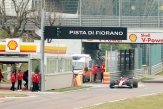
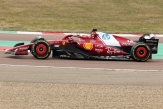
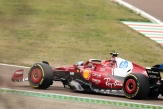
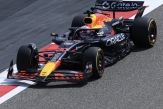
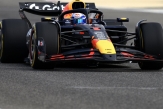
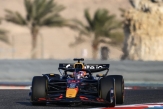

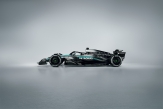
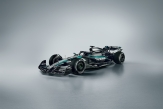
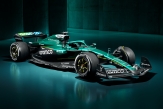
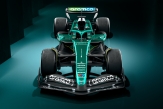
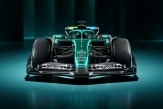
.jpg)
.jpg)
.jpg)

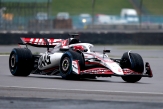

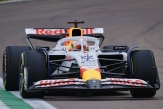
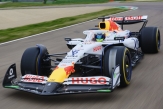
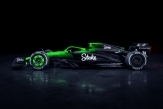
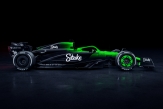

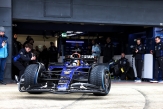
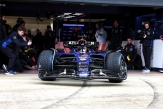
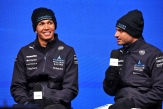
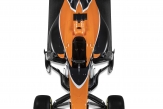
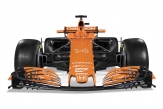
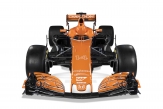

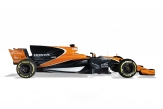
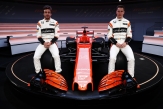
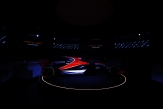
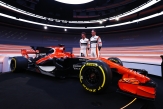
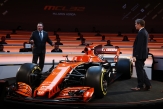
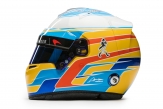
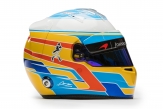


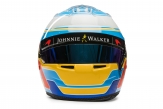
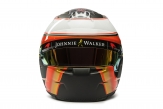
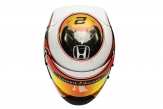
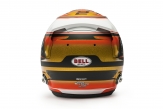
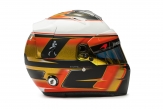

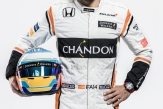
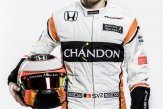
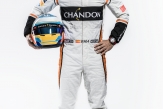
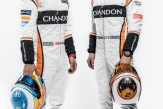
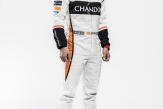
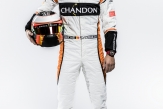

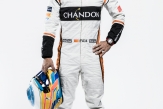
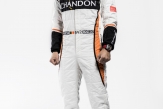
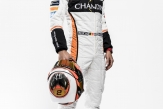
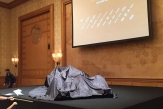
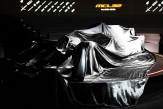




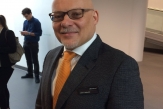

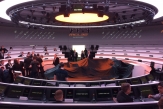

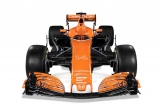
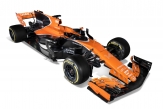
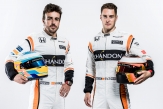
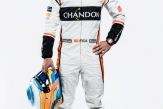
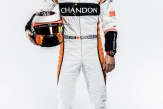
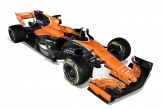



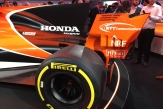
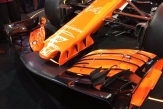
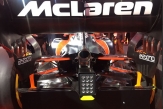
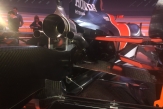

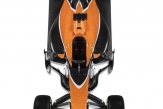
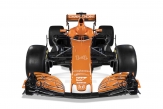

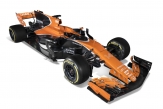
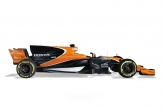



Коментари